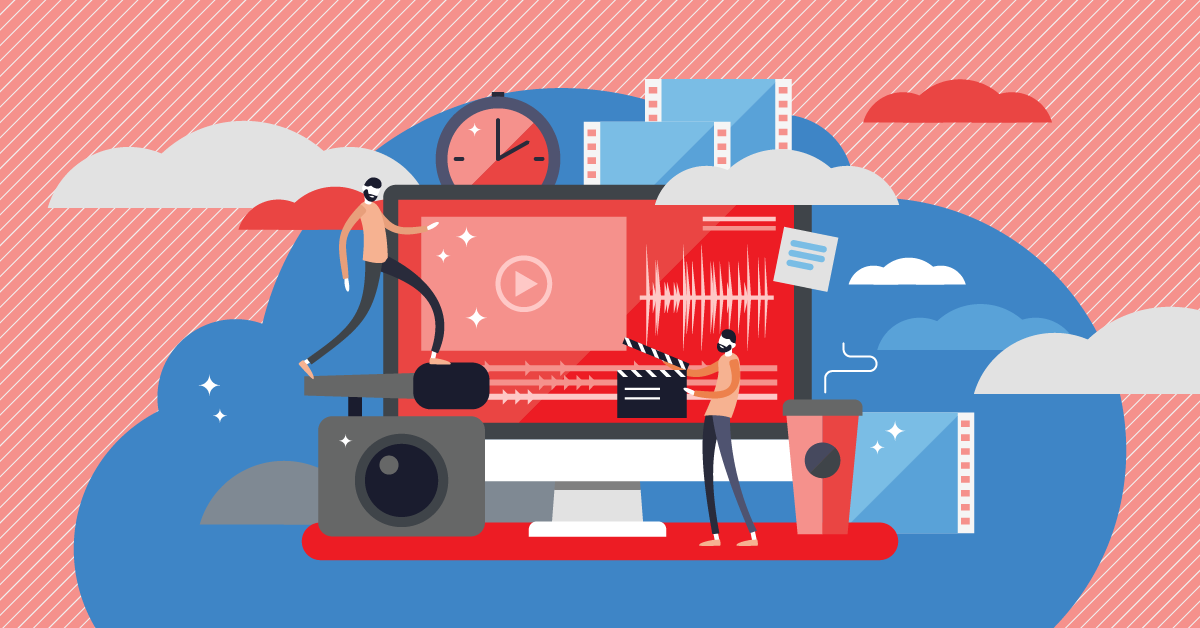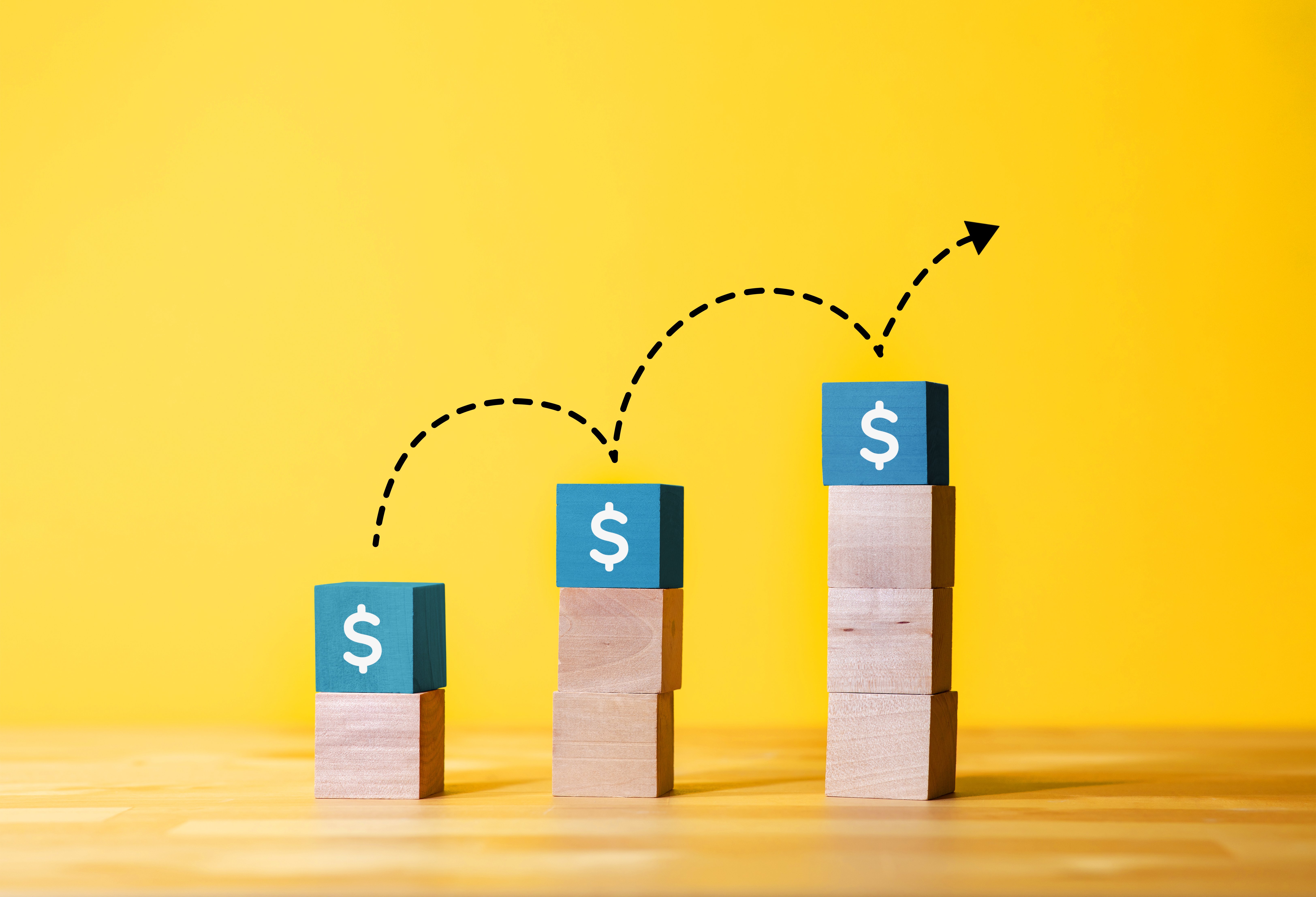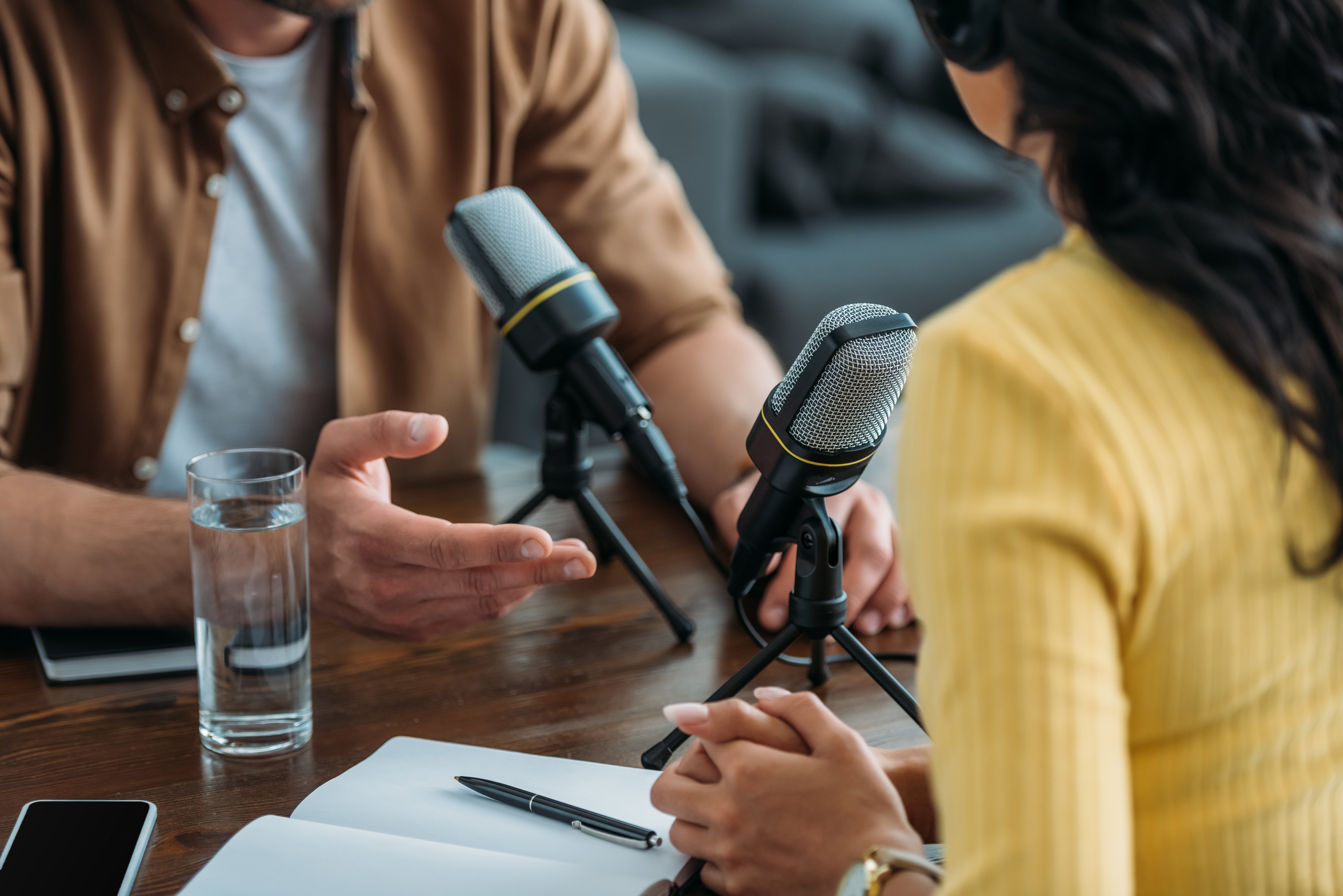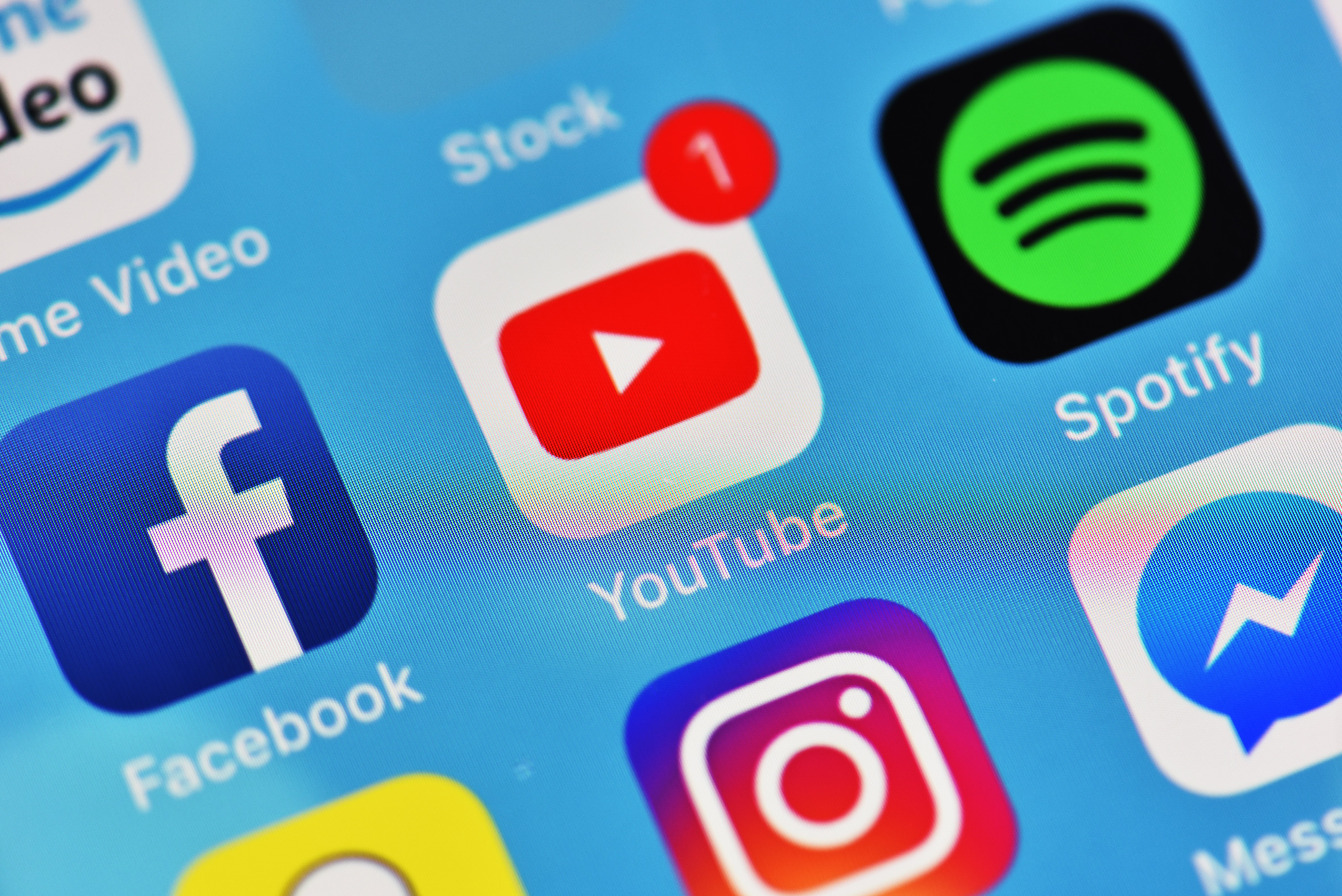Easiest Way to Start a Successful Podcast in 2021
 Written by Ed Mallory
Written by Ed Mallory
 October 11, 2021
October 11, 2021Easiest Way to Start a Successful Podcast

Looking to take your business to the next level? Starting a podcast is an excellent way to connect with your audience, drive engagement and solidify your brand image and company culture. In this step-by-step guide, we’ll walk through everything you need to get started.
Podcasts have quickly become a popular outlet for businesses, entrepreneurs, influencers, and other creatives to boost their engagement levels. And studies show that modern consumers love it!
Starting in 2021, the number of monthly US podcast listeners will increase by 10.1% year-over-year to 117.8 million. (InsiderIntelligence)
Starting a podcast may seem like an easy task. All you need is a microphone, laptop and a friend or two to banter back and forth with... Right? Not necessarily.
Sure, anyone can make a quick stop at Best Buy and simply start recording themselves rambling. But for your podcast to become a big success and powerful marketing tool, it should be treated with the same strategic diligence as any other moving part of your marketing campaign.
If you’re ready to take the steps to launch a successful podcast, you’re in the right place. In this ultimate guide, we’ll walk you through everything you need to know from the benefits of podcasting to how to get started the right way.
Why Start a Podcast?
Podcasts are continuously growing in popularity. According to Podcast Insights, there are now more than 2,000,000 active podcasts in the US with close to 50 million episodes currently available.
So, why are podcasts in such high demand? Well because there is a great deal of benefits to podcasting for your business. From building connections with your audience to generating more instant exposure, let’s explore all the advantages of starting a podcast.
1. A Great Addition to Blogs & Video Content

While blogging is an essential marketing strategy to boost your SEO ranking and videos enable your audience to connect a face and personality to your brand, podcasting adds another level of engagement.
The goal with any long-term marketing strategy is to continuously delight your customers and produce entertaining, informative or engaging content to stay top of mind. When you add podcasting into the mix, you gain yet another way to pop up on your customers’ social feeds and generate engagement.
2. Appeal to a New Group of Customers
Not everyone seeks out blogs to read, or enjoys watching long videos on youtube. In fact, most video content now has been whittled down to 10 or 20-second clips to hold the shrinking attention spans of the modern Insta-obsessed consumer.
A large portion of your audience may fall into one of these groups that don’t read or don’t watch videos. They may instead enjoy listening to podcasts.
Podcasting presents an opportunity to appeal to this segment of your customers and can lead to new customer relationships.
3. Connect with your Audience

The most effective marketing strategies are centered around human connection. When writing a blog or copy for your website, it is important to write in a way that’s conversational.
Podcasting is all a conversation! You can open up to your customers more, share more of your personality, and establish ongoing themes or inside jokes with your customer base. This in turn allows your customers to build a better connection with you.
4. It's On-the-Go Engagement
Podcasts are the perfect on-the-go entertainment. Your customers can listen to your podcast while driving, flying, jogging or even while working from home. It’s easy and convenient for listeners to download your podcast and listen whenever they want, wherever they go.
Whether you’re the first in your industry to start a podcast or last to the party, starting a podcast can help you build up your brand authority and become known as an industry expert. A podcast is the perfect way to flaunt your knowledge, share valuable insight and establish yourself as a leader on the topic of your business – someone your listeners can really trust.
By providing your customers with more ways to hear from you and learn from the experts on your team, you can quickly become their preferred source of information in your industry.
5. Become an Industry Expert
.jpg?width=5200&name=shutterstock_262492040%20(1).jpg)
Whether you’re the first in your industry to start a podcast or last to the party, starting a podcast can help you build up your brand authority and become known as an industry expert. A podcast is the perfect way to flaunt your knowledge, share valuable insight and establish yourself as a leader on the topic of your business – someone your listeners can really trust.
By providing your customers with more ways to hear from you and learn from the experts on your team, you can quickly become their preferred source of information in your industry.
6. Boost Conversion Rates
Trust is absolutely key in customer relationships. When you teach a consumer something they didn’t know before, they’re more likely to purchase from you!
Podcasting opens up the door to more trusting customer relationships because of a few factors. First, customers develop a closer connection with you by hearing your voice and listening to your stories. And second, you’re continuously teaching them new things about their industry or interests.
By establishing more trusting customer relationships with your audience, you’ll likely start to see higher conversion rates.
7. Drive Engagement Through the Roof

Podcasts are highly engaging. And there are studies to prove it!
Midroll, one of the largest podcast advertising networks, ran a study of 300,000 podcast listeners and found that 63% of them purchased a product after hearing about it from a host on their show; 71% said they would visit a sponsor’s website if promoted on a podcast; and another 63% said they would consider a product or service that is advertised on a podcast to which they listen.
8. It's an Awesome Way to Network
Networking, collaboration and cross-promotion are all incredibly important tactics to deploy when it comes to growing your brand. Podcasting is a highly effective way to foster a collaborative relationship with other big players in your industry and grow your brand beyond your current demographic.
By having other special guests on your show, you can get in front of their following and potentially gain new customers. It’s a win-win all around. Your listeners get to hear valuable insight from another expert in your industry, your special guest gains a new outlet to promote their own business, and you gain a great deal of exposure to new potential customers.
9. Potentially Bring in More Revenue

Podcasting is more than just a way to promote your business and have fun while doing so. It can also become another source of revenue for your business.
As your podcast gains a following and grows in popularity, you may discover opportunities to monetize through sponsored content, affiliate marketing and advertising.
10. It's Relatively Easy
With the right step-by-step guide, like the one you’re reading right now, starting a podcast is pretty easy. You can get started with an affordable setup. The hardest part might be finding the time in your busy schedule to record your first episode!
However, with podcasting growing in demand and all of these amazing benefits, I’m sure you can find an hour to spare!
How to Start a Podcast
Now that you understand the benefits of starting a podcast, let’s get down to the nitty-gritty of actually starting one. For your show to be a success, it’s important to spend a fair amount of time planning to ensure you have everything in place to record, edit, and promote it.
Things You’ll Need to Get Started

The truth is you can start recording a podcast pretty easily. You might think you need to invest a ton of cash in a microphone and recording equipment, but in reality, your smartphone and a pair of Apple headphones can suffice. Your concept and quality of content are the most essential pieces.
That being said, high-quality sound can really elevate your podcast and take it up that extra notch to keep your listeners coming back every week. So if you’re able to invest in a decent setup for recording, you’ll be better off in the long run.
Here is a list of items and resources you’ll need
-
A Reliable Laptop
You’ll need a laptop that’s fit to record and edit your podcast. Your personal or work laptop should suffice. Keep in mind, you may need to download recording software, which can take up quite a bit of space. So if you’ve been ignoring those “low disk space” notifications… you’re going to either buy a new one or start deleting some files.
-
A Microphone
If you don’t have the budget for a top-quality mic, no problem. Start off with an affordable option and work your way up as your podcast grows. If you do have the budget, it is well-advised to invest in something high-quality that will give you a crisp, professional sound right from the start.
You might need more than one microphone depending on the number of speakers you’ll be having on your show. Are you going to be interviewing others in-house? Do you have a co-host? These are things to consider as you start deciding what to purchase, but we’ll get more into that a little later.
-
A Pop Filter
A pop filter is a round screen that attaches to your microphone and blocks the mic from picking up on your “P” and “B” sounds. These can cause a popping sound in the recording that is difficult to edit out and can sound really annoying.
-
Headphones
A decent pair of headphones is key so that you can hear how you and any other speakers sound in the microphone without causing any feedback from the speakers.
-
An Interface
An interface is a piece of equipment that feeds the soundwaves from your microphone to your recording software. It’s kind of like a more advanced adapter that connects your mic to your computer. You don’t have to break the bank on an interface. There are plenty of affordable options available.
-
Cables
To plug your microphone into your interface, you’ll need an XLR cable. To plug your interface into your laptop, you’ll need a USB or Thunderbolt cable. However, your interface will likely come with this already.
-
Recording Software
There are many types of programs that range from free to more expensive. Depending on your budget, you’ll want to download the software that works for you and give yourself some time to learn it before you hit record for your first episode.
Remember, scale as you grow is our motto. You can always upgrade your software for something more professional like Logic or Protools once you can afford it.
-
The Right Location
Quality sound isn’t always about the microphone and software you use. The room you record in is equally as important. You want to ensure that you’re recording in a soundproof or at least, sound-friendly space that offers nice acoustics.
If you’re not planning on renting a big studio, you may need to “goldilocks” this a bit to find the ideal recording spot in your home. Try different spots to see what sounds good. A room that’s too big could potentially cause an echo on your recording that isn’t great. A smaller room, on the other hand, works to absorb the sound and provide a clean and controlled sound.
If you are planning on creating your podcast on a DIY basis, these are the items you’ll need to spend money on upfront to get started. Added costs may arise if you decide you want to hire an audio editor, mixer, or other professionals to help you out with post-production and launch.
Start a Podcast in 13 Easy Steps
To get from “I want to start a podcast!” to “Check out my podcast!”, there are a lot of I’s to dot and T’s to cross. We’ve broken it down into four different stages: planning, execution, and launch.
The Planning Stage
Time to plan. The more thought-out your ideas are, the more likely you are to create something valuable for your customer base.
1. Set Clear Goals for your Podcast

Ask yourself why you want to create a podcast. How is this going to contribute to your long-term marketing goals and objectives? Your goals can be anything from generating leads, gaining more exposure for your business, or building thought authority.
By deciding how your podcast will impact your growth as a business, you can determine how much time, money and effort you’ll need to allocate to meet your goals.
2. Dream up Your Concept and give it a Title + Description
What is your podcast going to be about? Decide on a theme and topic that’s relevant to your business. It’s also important that you are an expert on the topic, and that you’re passionate about it!
You might also want to take the time to do some research surrounding these topics to learn what other podcasters are doing in your genre. Listen to find out what you like, what you don’t like, and what gaps you can fill to offer new insight and more value to your listeners.
Once you have an idea for a concept that inspires you, give it a title! Key things to remember here are: make it catchy, make it memorable and make it relevant. Think of something that is search engine-friendly.
Another important step is writing your description. This is not only a way to tell listeners what they can expect, but it presents the opportunity to add in keywords (without keyword stuffing) to improve your searchability.
3. Pick a Category
Podcast hosting sites will provide a long list of categories and subcategories for you to choose from to further classify your podcast for search purposes. Pick the one that best fits your concept and theme. If you’re having trouble, take some hints from other podcasts in your genre.
4. Decide on the Format
Figuring out the format of your podcast means determining the length, schedule and outline of your show. Some podcasts are a short 30-minute discussion, while others last hours and hours. Some podcasts follow a once-a-week schedule while others are bi-weekly or bi-monthly.
Decide the length and schedule of your podcast, so you can make arrangements for recording, editing and promoting it. It might be helpful to check out what other podcasters in your industry are doing to get a feel for what works and what doesn’t.
As for the format of your show, do you plan on having a single host or multiple hosts? Will your show be interview-style with special guests? Many podcasts are a series of one-on-one interviews with entrepreneurs, thought leaders, CEOs and other influencers who share their incredible stories and valuable insights on specific topics.
The more you hone your concept and overall theme, you can figure out the best format for your podcast.
5. Plan Your First 5 to 10 Episodes
Before you start recording, it’s wise to think out a plan of action for at least the first 5 to 10 episodes. This will not only help you feel prepared as you start the execution process, but will help you finalize your concept. If you find yourself struggling to come up with enough content for 10 episodes, you might want to think of a different topic.
Planning the first batch of episodes will also help you with scheduling. If you plan to have other people on your show, you’ll want to make sure that you’re able to book time with them to do the interview.
The Execution Stage
With a solid plan ready to go, it’s time to saddle up and hit that record button. Follow these next few steps for a successful execution process.
6. Batch Episodes

Try to avoid recording, editing and releasing one episode at a time. Instead, make a plan to record and edit a batch of episodes.
This will allow you to have everything ready for launch, and be fully prepared to release a podcast on your regular schedule. You don’t want to release your first episode and then find yourself struggling to execute the second one with only a week or two until your next release date!
Remember - consistency is key. And once you establish a following of loyal listeners, you want to make sure you maintain a routine release schedule to keep them engaged.
Here’s an example of an initial batching schedule when you’re first starting out. Make a plan to record 5 episodes in a week. That means each day you’ll spend 1 hour recording your show. Then give yourself 1 to 2 weeks for the editing process. Depending on your experience, the length of your show or whether you’re going to hire a professional audio editor, editing an episode can take anywhere from 1 hour to 10 hours.
Once you have all 5 episodes complete, set up an automatic release schedule with your hosting platform, so your episodes are released on autopilot over the course of 1 to 2 months. This gives you time to start batching more episodes, so you can stay ahead of the game.
7. Record
As we mentioned above, you’ll need your laptop, microphone, interface, pop screen, headphones, software and all of that charisma to get started. For beginners, Audacity is an awesome and easy-to-use recording program that you can use for editing too.
Recording your show is relatively simple. The most important thing to do before you hit the record button is to check the input levels of your voice and your guests’ voices. There are a lot of super helpful video tutorials on how to do so. We recommend doing a quick youtube search to find a tutorial for adjusting levels in your specific software.
With your input levels set, you can hit that record button and rock n’ roll. If you don’t have a pop filter, be sure to maintain about a 4-finger length from the microphone. If you do have a pop filter, you can talk directly into it and stay only an inch away from it.
Remember not to move around too much as this will affect the levels of your recording. For the best quality, try to avoid making too many other sounds because they will be picked up by the microphone. If you typically talk with your hands, try not to wear jingly jewelry.
While some sounds can be cleaned up in post-production, it’s best to keep the recording as clean as possible. And if you’re planning on editing on your own without too much experience doing so, the cleaner the recording the better.
*Make sure you record an intro that plays at the beginning of each episode and an outro that plays at the end of your podcast. An intro will typically tell the listener who you are and what your podcast is about, while the outro will typically include a thank you and a way to connect with you on social media or other platforms.
8. Edit your Episodes

This is one of the more challenging parts of podcasting and if your budget allows, it might be worth paying a professional to do it for you. An audio editor will fine-tune and mix the recording to make it sound crisp and clean; edit out any "ums", pauses or other hiccups; organize the content to ensure it doesn’t become too repetitive; as well as add sound effects, music and other sound design elements to elevate the episode and make it more interesting.
If hiring an audio editor is out of the question, however, try these basic editing tips to achieve the best sounding result. First things first, watch as many Youtube videos as you can to better understand your software and the editing process.
Depending on the software you’re using and how detail-oriented you want to get, start by going through and cutting out any sentences or pauses that don’t add to the content. You want to create a steady flow of conversation and make sure the story stays on track. Too many tangents can cause the listener to grow bored and confused.
Next, you’ll want to do some basic mixing to make your voice less boxy and crisper. There are super simple plug-ins you can turn on with the click of a button to do this automatically.
Make sure you add the intro and outro, and VOILA! You have your first podcast episode ready for publishing.
9. Design your Podcast Artwork
Another important step that will help elevate your podcast is the artwork. You’ll want to make sure your show has a distinct graphic to go with it that’s visually appealing and memorable. You might want to hire an artist to design this for you or use a program like Canva to design it yourself.
The Launch Stage
At this point, you’ve recorded and edited your first batch of episodes. Now it’s time to push this baby bird out of the nest and let it fly!
10. Choosing a Hosting Platform
Decide which platform you’re going to use as the hosting site for your podcast. A hosting site is a platform that uploads and stores your media files. This is different from a podcast distributor which is how you distribute your podcast to your audience. Those are the big guns you know like Spotify, Apple and Google.
Some things to keep in mind when choosing a hosting platform include storage and bandwidth limits, analytics reporting, compatibility with your website and ease of use. If you want to be able to monetize in the future, you’ll want to make sure the platform has that as an option.
Also, consider the cost. While some hosting platforms are free to create an account and upload your podcast, others offer tiered pricing with more features and capabilities.
Do your research and find the right platform for your podcast based on your budget and unique business needs!
11. Distribute your Podcast

It’s best to publish your show on popular podcast distribution platforms such as Spotify, Apple, Amazon or Google. However, there are many boutique distributors like Pandora, Stitcher, and iHeartRadio that are still well-known with lots of listeners, so don’t leave these out of your distribution strategy.
The more places you distribute your podcast, the more listeners you’ll gain!
12. Build a Page on your Website for your Podcast
Make sure you design a page to add to your website that is designated for your podcast, and always keep it updated with the latest episode presented first. This will allow you to market your show with SEO keywords and provide an easy way for listeners to find where they can listen in.
13. Market your Podcast
Now that your show is out there for the world to hear, it’s time to start marketing it to grow your following of listeners. You can market your podcast the same way you would market any of your other content offers. Share it on your social media, promote it on your website, and send it to all of your email subscribers! If you have special guests on your show, make sure you provide them with promotional material so that they can share it with their audience as well. This might include a flyer or sneak-peek clip from the show.
We recommend setting up a designated SMS marketing campaign to which listeners can subscribe so that they receive a text when a new episode comes out!
Another fun way to make the most of your podcast is to simultaneously film your recording session. That way you’ll not only have an awesome podcast to share, but you’ll also have video content to go along with it. You can cut short clips from this video content to share with your audience as a way to promote the full episode or get listeners excited for the upcoming episode.
Have Fun With It

Creating a podcast is not only an effective content strategy, but it’s an awesome way to change things up and add a little excitement to your usual schedule! While it may be a bit challenging to get started, you’ll quickly find that it is well worth the hard work. Just have fun with it, get creative and stay consistent. Your customers will love hearing from you and learning from an expert. Happy Podcasting!
DON'T MISS THE LATEST






